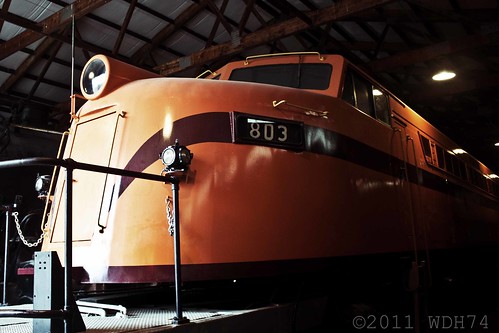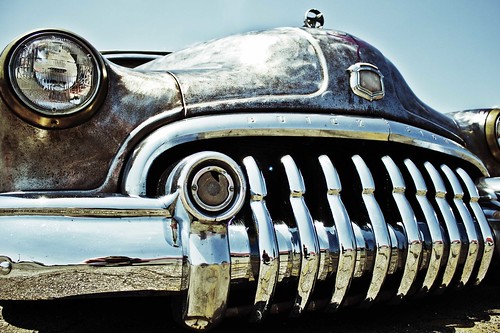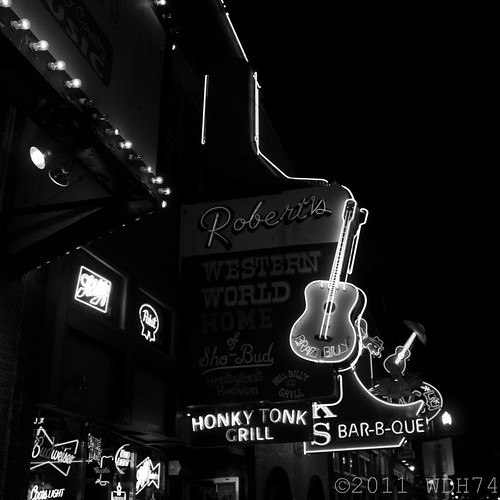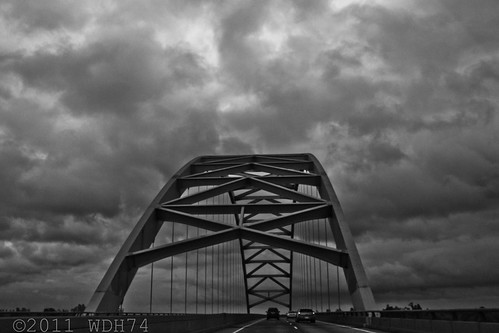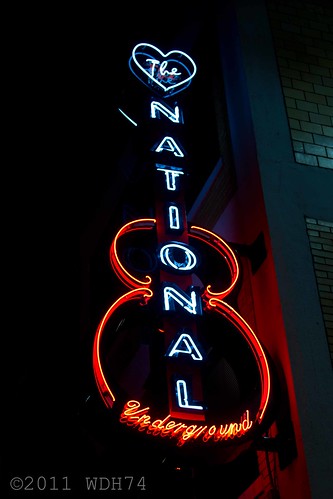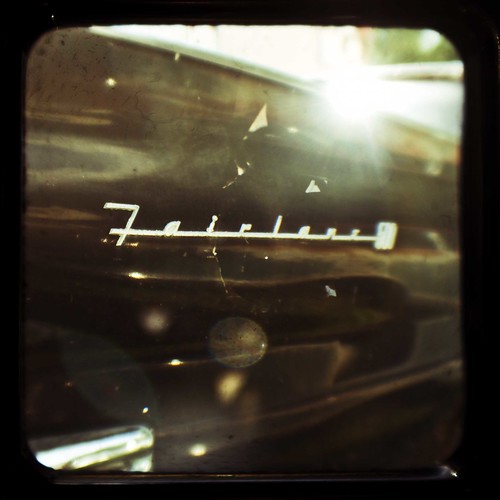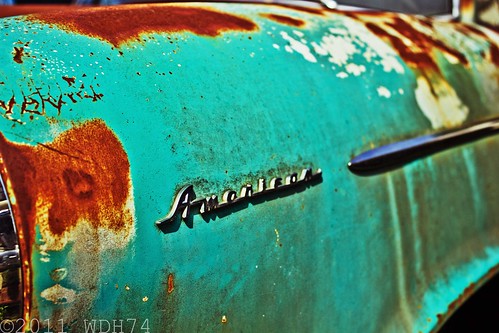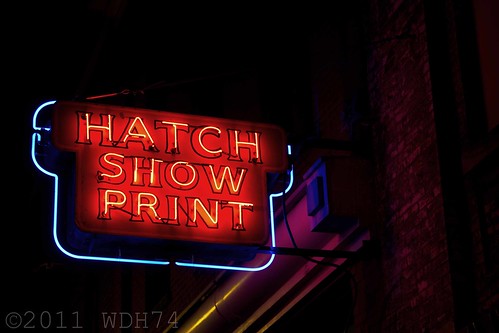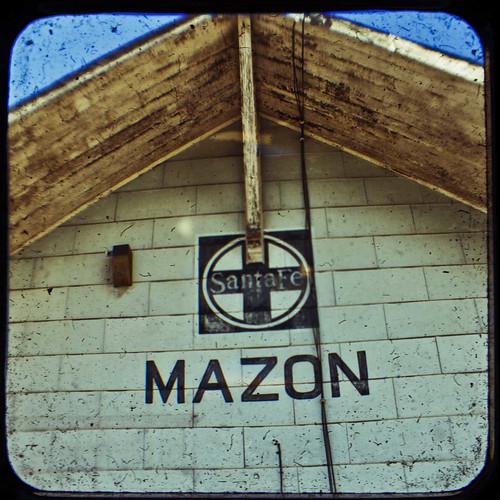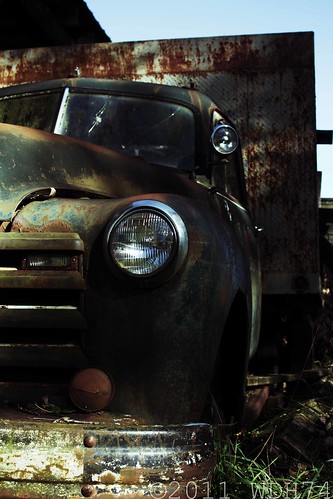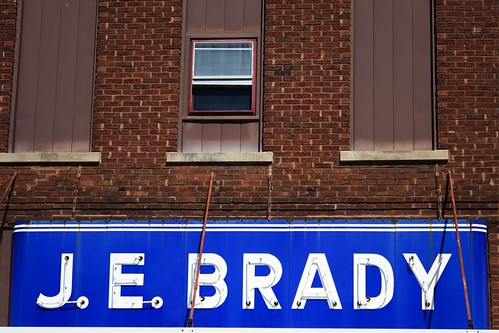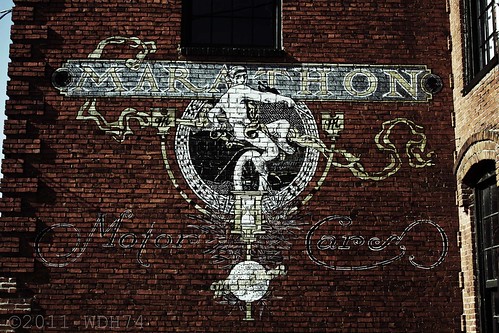Wednesday, November 30, 2011
Little Joe
Other users of Little Joes included Brazil's national railway (which received five of them), and the Chicago, South Shore, and South Bend, which got three of them. This survivor is one of the South Shore's, and is preserved at the Illinois Railway Museum.
Monday, November 28, 2011
Friday, November 25, 2011
Thursday, November 24, 2011
Bridge
Tuesday, November 22, 2011
Master Mix Feeds
Monday, November 21, 2011
Race on Sunday, sell on Monday
Factory SS cars were in fact available from the dealership, but they were usually special order only and frequently were stripped out base models. The Plymouth Belvedere pictured here had thin van seats (they were lighter than a bench), no back seat (it's heavy), no heater or air conditioning (it's heavy), no radio (it's not heavy but you can't hear it over the engine anyway), no sound deadening (it's heavy), and no hubcaps (because you're likely to get rid of the wheels anyway). In short, they weren't nice places to be for more than a quarter mile at a time. Modifications were few, and limited mostly to safety equipment.
I have no idea if this Plymouth was a genuine Super Stock car back in the day, but it was very convincing if it's a clone. Everything was correct, and it looked and sounded great.
Friday, November 18, 2011
The National Underground
Tuesday, November 15, 2011
Monday, November 14, 2011
Ramble On
Famous for being a car that goes very fast in second gear*, the Nash Rambler was a popular car in the compact segment. Sold under both the Nash and Hudson names, the model was discontinued in 1955, the new car featured modified Nash "Airflyte" styling, to better integrate with senior Nash models. This, in combination with economical engines and a low price, helped the Rambler to be the first really popular American compact car, and it remained in production until 1955, not long after the formation of American Motors Corporation.
In 1957, AMC was in need of a compact car, something to slot in between the tiny two seat Metropolitan and the larger family sized Rambler Six. Fortunately, AMC had retained the previous model's tooling and it was a fairly simple job to update the styling. The "new" car made it's debut in 1958 as the Rambler American.
The American was well reviewed, praised for it's low price and economy, and proved to be a popular car throughout it's three year lifespan. In 1961, all new styling appeared, ending the Rambler's visual links to earlier "Airflyte" Nashes.
*a reference to the Playmate's 1958 song "Beep Beep".
Friday, November 11, 2011
Advertising without posters is like fishing without worms
Founded in 1879 by brothers Charles and Herbert Hatch, Hatch Show Print is quite possibly one of the most famous print shops in the world. Their first print job was for an appearance by the Reverend Henry Ward Beecher, brother of abolitionist and author Harriet Beecher Stowe.
Orders poured in soon after, and the Hatch brothers' work began to appear on buildings all over the south. The brothers printed posters for all kinds of events and businesses, and created some iconic images. The Hatch Show Print style is recognized all over the world, and the shop is still in business today, doing concert posters, handbills, reprints of some classics, and custom print jobs. It's a really neat place, and well worth a visit if you're in Nashville.
Oh, and they have this awesome neon sign out front!
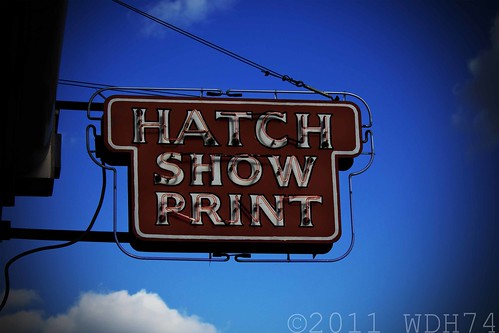
Thursday, November 10, 2011
The Times
Old school sign for the Ottawa Times newspaper. The whole building has a very old fashioned, Daily Flash vibe to it.
Tuesday, November 8, 2011
Mazon Depot
We've seen the old Santa Fe station in Mazon, Illinois before, but I felt this was such a great TtV shot that it was worth revisiting.
Monday, November 7, 2011
Chevy Truck
A 1940's Chevrolet one ton truck, that has, as far as I can tell, been in the same ownership since it was new. One of several vehicles on this property, all disused and all going to ground.
Friday, November 4, 2011
J.E. Brady
This week's Neon Friday post is a bit of a mystery. This simple sign is in the town of Pontiac, Illinois, along old Route 66. I've been through Pontiac a couple of times, but this was the first time I noticed this particular sign. It's kind of hard to see-there's a metal awning just below it (those are the awning's supports you see in front of the sign), so you can't really see it unless you're across the street.
I have no idea who J.E. Brady was, or what J.E. Brady did. The building has a martial arts academy in the storefront now. This sign looks to be in really good shape-the glass is intact and it's not especially rusty. I wonder if it still works, and have this odd fantasy that it's on a timer and still lights up every night at 6 pm.
Thursday, November 3, 2011
Wednesday, November 2, 2011
Marathon Motor Cars
Having grown out of the Southern Engine and Boiler Works of Jackson, Marathon Motor Cars were built in Nashville, Tennessee for just four years, between 1910 and 1914. Then as now, it was common for auto manufacturers to buy in parts and assemblies, but Southern chose to engineer and make everything in-house.
Initially badged as Southerns, the company changed the name to Marathon and moved to a new factory in Nashville. The cars were well regarded-probably because of the total control the company had over it's engineering-and demand soon outstripped supply. However, like so many other early auto manufacturers, management didn't keep up with engineering, and within a few years the company ceased automobile production.
The factory complex on Clinton Street in Nashville still stands, and has been partially converted to retail and gallery space. In addition to some old signwriting, some old logos have been lovingly recreated on the factory walls, including this beauty.

